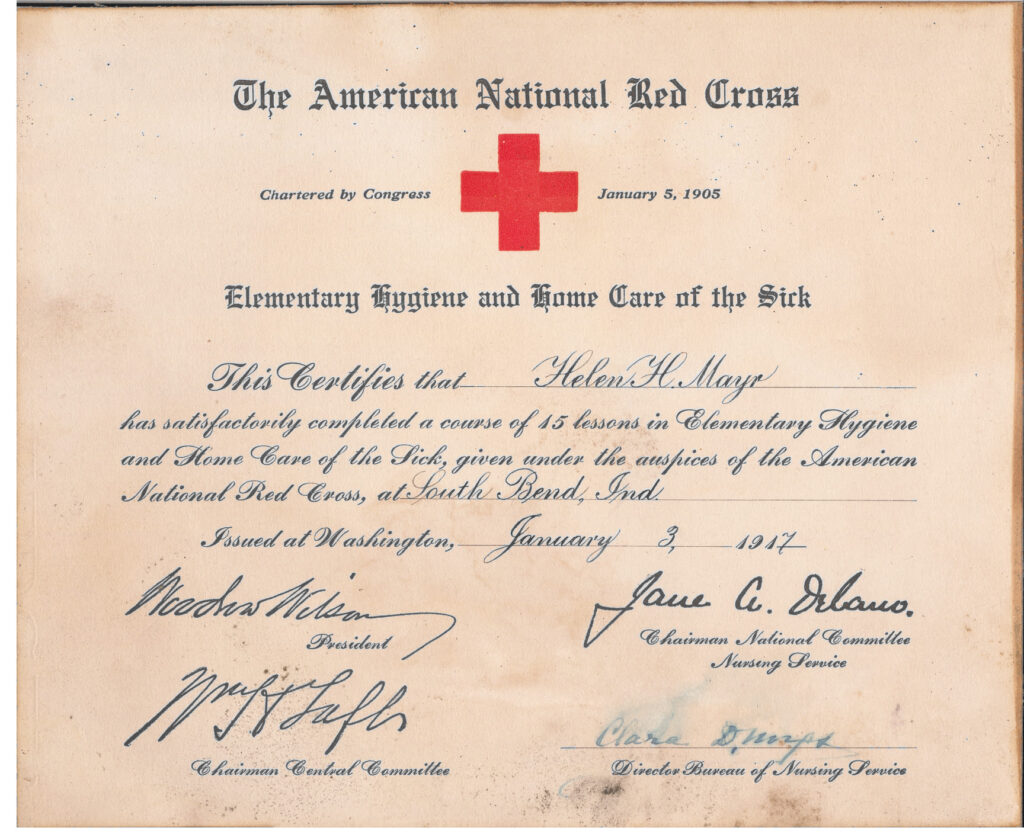By Kelsey Koym, Archivist and Special Collections Librarian.
Two new cultural heritage objects have recently been added to the McGovern Historical Center (MHC) Reference Files. A copy of a speech given by Reverend (Rev.) William Dunn Ryan and an American Red Cross certificate, offer unique insight into the American Healthcare culture of the early 20th century both during World War I and its effects after.

The copy of a speech given by Rev. William Dunn Ryan on November 11,1923, appears to be a copy from the type-written speech given by Rev. Ryan at the ground-breaking ceremony of Hermann Hospital in Houston, Texas. The cover page of the main speech indicates that this copy was submitted by a relative of Rev. William Dunn Ryan, Patricia (Pat) Ryan Williams. Rev. Ryan highlights the importance of what Hermann Hospital (now Memorial Hermann-Texas Medical Center) means for those who are sick and in need of medical care and who otherwise would not be able to afford treatment. You can read the whole speech through MHC AtoM.
The speech was given a few years after the end of World War 1, which had greatly impacted the way health care was administered as the Great War had led to serious advancements in sanitation and hygiene. The War also greatly impacted the cultural psyche around what it meant to care for the sick, and this reflection and introspection led Rev. William Dunn Ryan (1923) to say:
The story of the Hospitallers in the time of the Crusades, and their tender care for the wounded and sick, gives us new admiration for men who lived in an age of cruelty and continuous war. And no tongue or pen will ever be able to fittingly set forth the ministries of the Red Cross in the recent world conflict. But if “peace hath her victories no less renowned than war”, peace hath also her obligation of caring for the sick and helpless, no less imperative than war. In our modern life, with the advancement of science and the necessity for expensive apparatus and equipment the hospital has become more indispensable than in any former period. It has come to be an institution toward which a sick man looks as a drowning man looks toward a life-boat (pg. 4).

The certificate from the American National Red Cross, now called the American Red Cross, was bestowed to Helen H. Mayr on January 3,1917 after having completed 15 lessons in Elementary Hygiene and Home Care of the Sick lessons in South Bend, Indiana. The Elementary Hygiene and Home Care of the Sick program was initiated by the founder of the American Red Cross Nursing Service, Jane Arminda Delano, whose name appears in the bottom right corner of the certificate. These lessons were some of the first standardized instruction for nurses on patient care and at home care involving bacteria and their relation to disease along with other hygienic factors in the home. This work greatly impacted those affected by World War I, and the War accelerated the Red Cross’ advancement in medical care that was mindful of how microorganisms played a role in health and disease. You can check out the certificate through MHC Reference Files in AtoM.